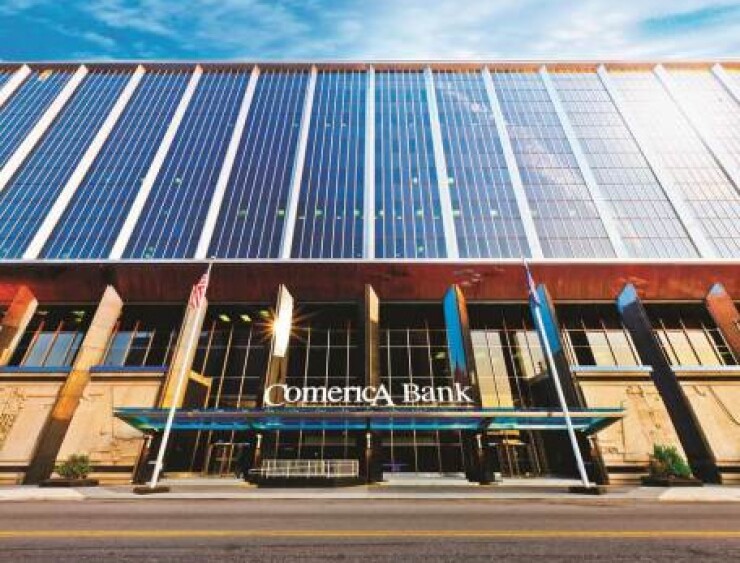Rising interest rates pushed Comerica's net interest income significantly higher, while the company's borrowers appeared to have little difficulty servicing their debt. The result was record levels of revenue and profit for the Dallas-based company, which reported its third-quarter results Wednesday.
Comerica reported revenue totaling $985 for the quarter ending Sept. 30, powered by an expanding loan portfolio. Loans grew 6.2% year-over-year to $51.1 billion. On a linked-quarter basis, Comerica added about $1.1 billion of loans, which, given the rise in rates, helped widen its net interest margin to 3.5% on Sept. 30, up from 2.70% three months earlier and 2.23% on Sept. 30, 2021.
"I was surprised by the increase in the margin," John Arfstrom, who covers Comerica for RBC Capital Markets, said on a conference call with the company's management and other analysts. "That was nice to see."
Comerica reported net income of $351 million, up 34% from the same three months in 2021. Curtis Farmer, Comerica's chairman and CEO, characterized the third-quarter bottom line as "excellent." Comerica's previous record for quarterly earnings was $350 million set in the first quarter of 2021.

"We feel very positive about the trajectory of our business as we move through the remainder of the year," Farmer added on the conference call.
Chief Financial Officer James Herzog projected full-year 2022 loan growth of 7%, with net interest income growth expected to top 33%.
"We expect net interest income to be at another all-time high next year," Herzog said on the call.
If there was a third-quarter headwind for the $84.1 billion-asset bank, it was deposits, which declined 11% year over year to $73 billion on Sept. 30. Comerica is projecting the slide to continue in the fourth quarter and into 2023 before leveling off.
Even there, Comerica found a silver lining. Herzog noted that non-interest-bearing deposits have proved stickier to date than interest-bearing ones — and he believes the trend may be long-lasting. That's because non-interest deposits can be redeployed by corporate depositors at a moment's notice.
"We do see the corporate treasurers are carrying higher safety net levels of cash," Herzog said. "That explains why they're maybe going to their interest-bearing accounts first to the extent they have use of funds."
Herzog also pointed to comments from some corporate financial officials who have said that real-time payments have made it more challenging to predict cash flow, creating another driver behind the elevated non-interest balances.
Comerica's credit quality remained exceptionally strong, although there were some signs of softening. While nonperforming loans declined 11% year over year to $262 million, or 0.51% of total loans, the level of criticized loans rose to $1.63 billion, up from $1.54 billion on June 30.
Most of the uptick in criticized loans was reflected in the bank's leveraged lending, automotive and technology and life sciences portfolios, though to date there has been limited migration to the nonperforming category, Chief Credit Officer Melinda Chausse said on the call.
"We don't see anything in the portfolio that is giving us a lot of pause or a lot of reason for concern," Chausse said.
Comerica's net chargeoffs, which amounted to 10 basis points of total loans, are expected to remain near historic lows through the fourth quarter, according to Chausse.






